Gujarat Tour Package: Temples, Beaches & Desert Adventures
Published on February 08, 2025
Gujarat: A Tapestry of Culture, History, and Natural Wonders
Nestled on India's western coast, Gujarat stands as a vibrant testament to the country's rich cultural heritage and diverse landscapes. This westernmost state of India has emerged as a premier tourist destination, offering visitors an unparalleled blend of ancient traditions, architectural marvels, and natural splendor. From its sun-kissed beaches along the Arabian Sea to its majestic desert landscapes, Gujarat presents a fascinating mosaic of experiences that captivate travelers from around the globe.
Gujarat's historical significance dates back thousands of years, with archaeological evidence suggesting human habitation since the Stone Age. Gujarat served as a crucial center for trade and commerce during ancient times, establishing vital connections between India and civilizations across the Mediterranean, Middle East, and Africa. This strategic location fostered a unique cultural synthesis, evident in its architecture, cuisine, and traditional practices that continue to thrive today. For travelers seeking to explore this rich heritage, a Gujarat tour package from Delhi offers a seamless journey into the heart of its vibrant history and culture.
Gujarat's cultural richness is perhaps most vividly expressed through its magnificent temples, which stand as living monuments to the state's spiritual heritage. These sacred sites, ranging from ancient Hindu temples to Jain pilgrimage centers, attract millions of devotees and tourists annually. The state's religious diversity extends beyond Hinduism, encompassing significant Islamic, Jain, and Christian communities, each contributing distinct elements to Gujarat's cultural tapestry.
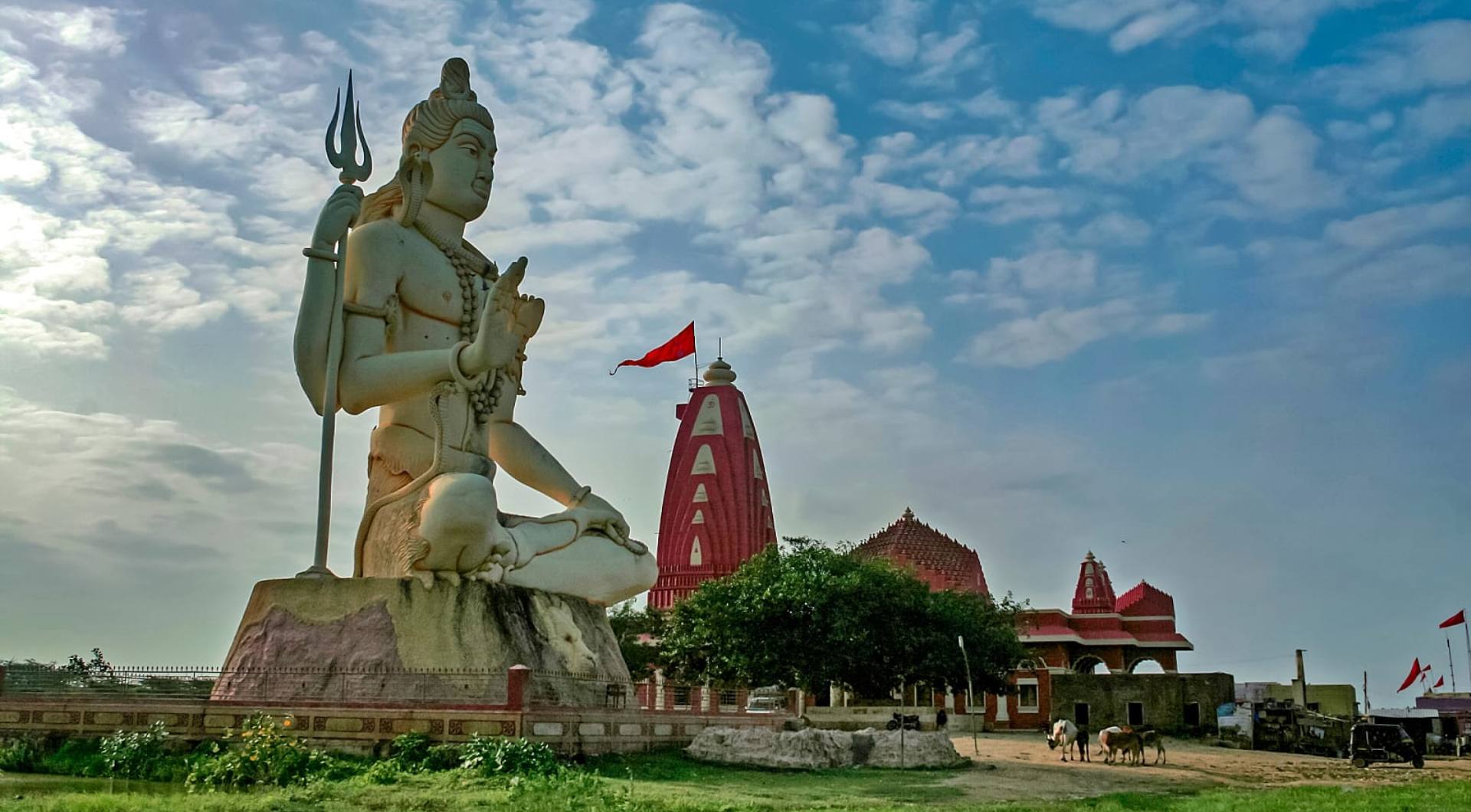
Natural wonders abound in Gujarat, creating a paradise for nature enthusiasts and adventure seekers alike. The state boasts over 1,600 kilometers of coastline, featuring pristine beaches that offer perfect settings for relaxation and water sports. In stark contrast, the Rann of Kutch presents one of the world's largest salt deserts, transforming into a surreal white landscape during the dry season and hosting vibrant cultural festivals that celebrate local traditions.
Wildlife sanctuaries and national parks throughout Gujarat provide sanctuary to numerous species, including the endangered Asiatic lion in Gir Forest National Park – the only place outside Africa where these majestic creatures can be found in the wild. The state's varied topography also includes lush forests, rolling hills, and picturesque lakes, making it a haven for eco-tourism and outdoor adventures.
This remarkable combination of historical depth, cultural vibrancy, and natural beauty positions Gujarat as an exceptional travel destination. Whether seeking spiritual enlightenment, cultural immersion, or thrilling adventures, visitors to Gujarat discover a land where ancient traditions harmoniously coexist with modern developments, creating an unforgettable experience that truly embodies the essence of Incredible India.
Spiritual Journeys: Exploring Gujarat's Architectural Marvels
Gujarat's temple architecture stands as a testament to the region's rich spiritual heritage and artistic excellence, with each sacred site telling its own story of devotion and craftsmanship. The Somnath Temple, one of the twelve Jyotirlingas of Lord Shiva, rises majestically along the Arabian Sea coast, its seventh incarnation standing as a symbol of resilience against historical invasions. Constructed in the Chalukya style of architecture, the temple features intricate carvings and a towering shikhara that seems to pierce the sky, drawing pilgrims from across the world who seek blessings at this revered site.
In Ahmedabad, the Akshardham Temple complex represents a modern architectural wonder while maintaining traditional design principles. Spread across 23 acres, this marble masterpiece showcases the finest examples of Indian stone carving techniques, with over 200 ornate pillars, nine domes, and countless sculptures depicting scenes from Hindu mythology. The temple's grandeur is complemented by its spiritual ambiance, created through precise Vastu Shastra principles and celestial alignments that enhance the visitor's devotional experience.

The Sun Temple at Modhera, built in 1026 AD during the Solanki dynasty, exemplifies the sophisticated understanding of astronomy and architecture possessed by ancient Indian builders. Designed so that the first rays of the sun illuminate the temple's inner sanctum during equinoxes, this UNESCO World Heritage Site candidate features three distinct components: the Surya Kund (stepwell), Sabha Mandap (assembly hall), and Guda Mandap (sanctum). The temple's exterior walls are adorned with exquisite carvings depicting various aspects of daily life, mythology, and celestial beings, demonstrating the artisans' mastery over stone.
Equally impressive is the Dwarkadhish Temple in Dwarka, believed to be one of the Char Dham pilgrimage sites. This five-storied structure, supported by 72 pillars, combines elements of both Nagara and Dravidian architectural styles. The temple's golden spire, rising 51.8 meters above the ground, serves as a beacon for devotees arriving by sea, while its elaborately carved toranas (archways) and mandapas showcase the evolution of temple architecture over centuries.
The Jain temples of Palitana represent another architectural pinnacle, forming what is considered the holiest pilgrimage site for Jains. The marble temples, numbering over 900 on the Shatrunjaya hill, create a breathtaking panorama of white structures ascending the mountain slopes. Each temple exhibits distinctive features, from elaborate toranas and intricate jali work to beautifully proportioned shikharas and mandapas, all crafted with mathematical precision and artistic finesse.
These architectural masterpieces not only serve as places of worship but also as living museums of art and culture. The temples' construction techniques, material choices, and decorative elements reflect the socio-cultural context of their times while maintaining a timeless quality that continues to inspire awe. The careful integration of natural elements, such as water bodies and gardens, with architectural forms creates spaces that transcend mere physical structures, becoming conduits for spiritual connection and artistic appreciation.
Beaches and Coastal Delights: Gujarat's Seaside Paradise
Gujarat's extensive coastline offers a treasure trove of beach destinations, each with its unique charm and attractions. Diu Beach, nestled on the southern tip of the state, stands out as a popular retreat with its golden sands stretching along the Arabian Sea. This picturesque beach provides visitors with a range of activities, from leisurely camel rides and horseback riding to more adventurous pursuits like parasailing and jet-skiing. The nearby Nagoa Beach complements Diu's offerings with its calm waters, making it ideal for swimming and family picnics, while the surrounding palm groves create a perfect setting for relaxation.
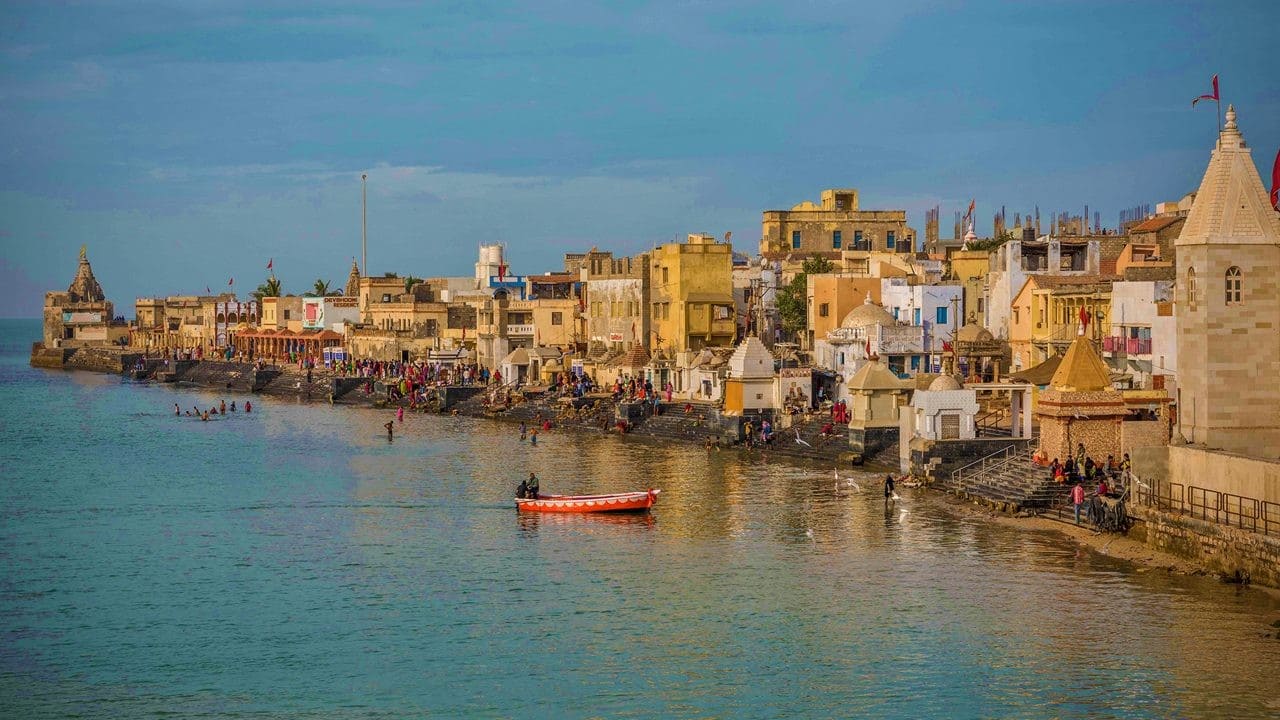
Further north, Tithal Beach near Valsad attracts tourists with its distinctive black sand, a geological curiosity that sets it apart from other coastal destinations. The beach's gentle waves and shallow waters make it particularly suitable for children, while the adjacent amusement park adds to its family-friendly appeal. Visitors can enjoy traditional Gujarati snacks from the numerous beachside stalls or indulge in water sports facilities that include banana boat rides and speed boating. The nearby Tithal Ashram adds a spiritual dimension to the beach experience, offering meditation sessions and yoga classes for those seeking tranquility.
Mandvi Beach in Kutch district presents a different facet of Gujarat's coastal beauty, known for its historic shipbuilding yard and vibrant fishing community. The beach's long stretch of white sand provides an excellent vantage point for watching traditional wooden boats being constructed using age-old techniques. Adventure enthusiasts flock to Mandvi for kite surfing and wind surfing, thanks to the consistent winds that sweep across the coast. The nearby Vijay Vilas Palace adds historical interest to the area, while the local markets offer opportunities to purchase authentic Kutchi handicrafts and seafood delicacies.
For those seeking solitude, Beyt Dwarka Island offers pristine beaches accessible by ferry from Okha Port. This remote destination provides a peaceful escape with its crystal-clear waters and abundant marine life, making it a prime spot for snorkeling and scuba diving. The island's religious significance, housing the Beyt Dwarka Temple, attracts pilgrims who combine spiritual visits with beach relaxation. The surrounding coral reefs teem with colorful fish, creating an underwater paradise for marine enthusiasts.
Chorwad Beach near Junagadh offers a perfect blend of natural beauty and recreational facilities. Known for its clean shores and well-maintained amenities, the beach features luxury resorts that provide everything from basic accommodation to high-end spa treatments. Water sports enthusiasts can enjoy speed boating, kayaking, and pedal boating, while nature lovers appreciate the opportunity to observe migratory birds that frequent the nearby wetlands. The beach's proximity to historical sites like the Girnar Hill and Junagadh Fort makes it an ideal base for exploring both coastal and inland attractions.
Each of these beach destinations contributes uniquely to Gujarat's coastal tourism offerings, providing visitors with diverse experiences that cater to various interests and preferences. From adrenaline-pumping water sports to serene sunset views, Gujarat's beaches present endless possibilities for creating memorable seaside adventures.
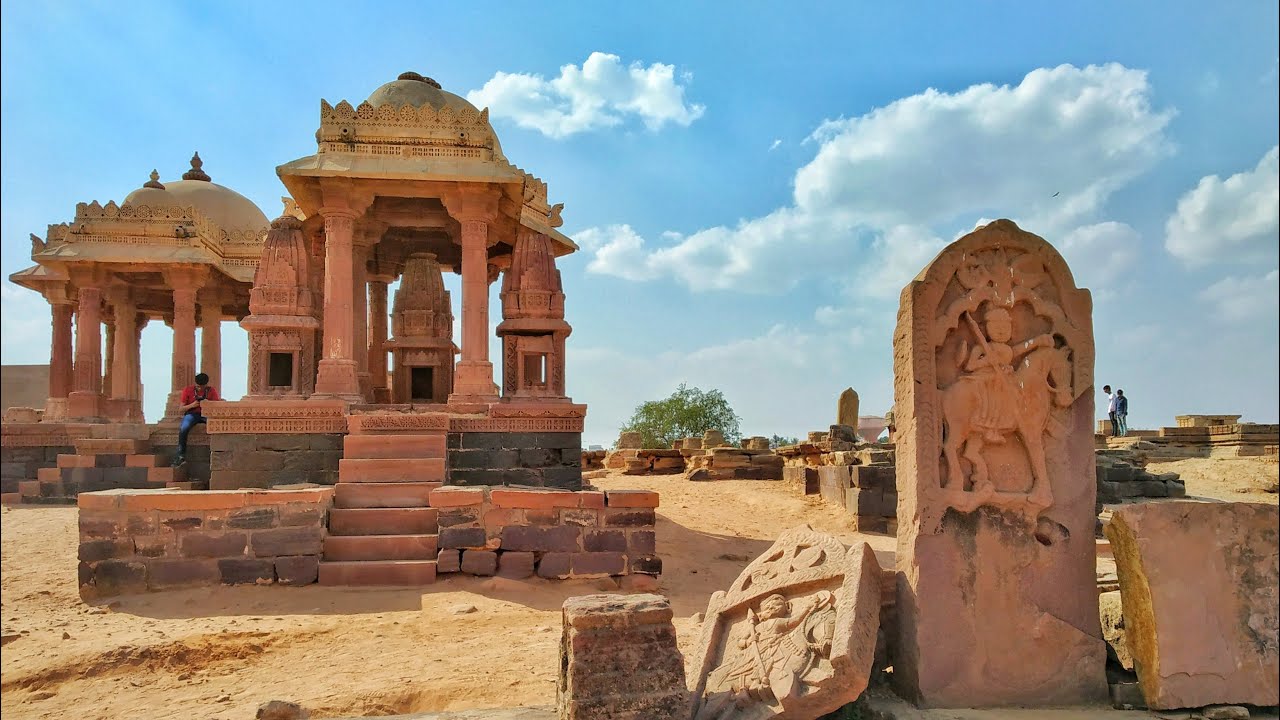
Desert Adventures: Embracing the Magic of Gujarat's Arid Landscapes
The Rann of Kutch, spanning over 7,500 square kilometers, stands as one of the world's largest salt deserts, offering visitors an unparalleled desert experience that transcends conventional notions of arid landscapes. During the monsoon months, this vast expanse transforms into a shallow marshland, attracting migratory birds and creating temporary islands that disappear with the receding waters. As the dry season approaches, the Rann reveals its true character – an endless white canvas of salt flats that stretches to the horizon, creating optical illusions that challenge perception and reality.
Adventure seekers find their paradise in the Rann's diverse terrain, with multiple safari options catering to different preferences. Camel safaris, led by experienced local guides, allow visitors to traverse the salt flats in traditional style, offering intimate encounters with nomadic communities and their unique way of life. For those seeking faster-paced exploration, jeep safaris navigate through the Little Rann of Kutch, home to the endangered Indian wild ass and numerous bird species, providing opportunities for wildlife photography and nature observation. The increasingly popular ATV (All-Terrain Vehicle) safaris offer thrilling rides across the rugged terrain, combining adventure with spectacular views of the desert landscape.
Cultural immersion reaches its peak during the annual Rann Utsav, a three-month-long festival that celebrates the region's rich heritage. Traditional Bhunga huts, colorfully decorated with mirror work and mud paintings, serve as unique accommodations that provide authentic village experiences. Visitors participate in local crafts workshops, learning intricate embroidery techniques from skilled artisans whose families have practiced these arts for generations. Evening cultural programs showcase folk dances like Garba and Ras, accompanied by traditional musical instruments, creating an atmosphere of celebration under the starlit desert sky.
The desert's transformation during full moon nights presents a magical spectacle, with the salt flats reflecting moonlight to create an ethereal glow that stretches infinitely. Special overnight camping experiences allow guests to witness this phenomenon while enjoying traditional Kutchi cuisine prepared over open fires. The region's unique ecosystem supports specialized flora and fauna adapted to extreme conditions, offering opportunities for ecological study and nature appreciation. Visitors can explore ancient fossils embedded in the salt crust, remnants of a time when this desert was part of the Tethys Sea.
Local communities play a vital role in shaping the desert experience, sharing their knowledge of survival techniques and traditional wisdom passed down through generations. Interaction with Rabari herders, Ahir cattle breeders, and Meghwal weavers provides insight into sustainable living practices that have allowed human habitation in this challenging environment. The desert's stark beauty, combined with its cultural richness and adventure opportunities, creates a holistic experience that challenges perceptions and leaves lasting impressions on those who venture into its embrace.
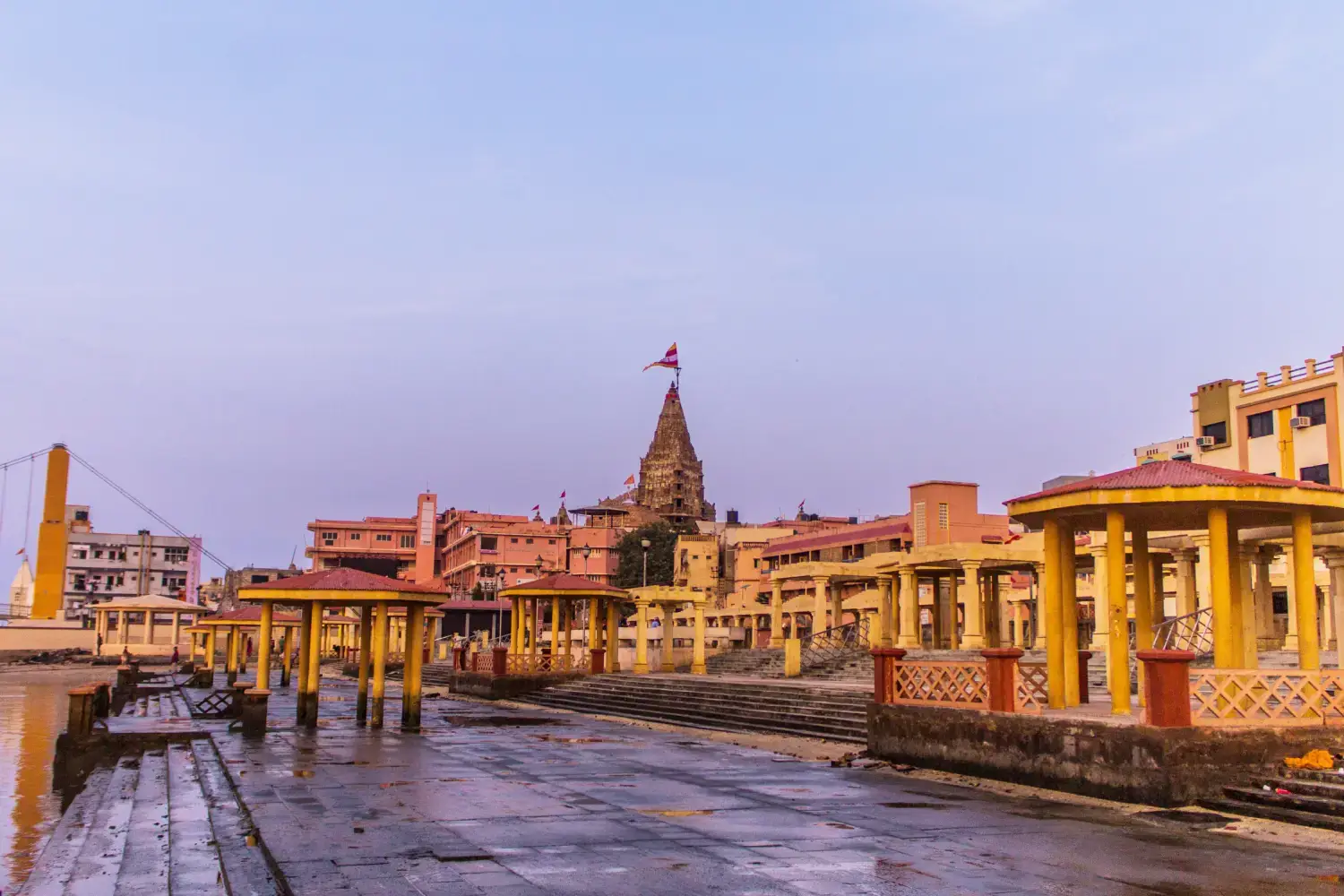
A Culinary Journey Through Gujarat's Flavors
Gujarat's culinary landscape reflects the state's diverse geography and cultural influences, offering a delightful array of vegetarian dishes that have evolved over centuries. The traditional thali, served on a large platter, presents a comprehensive sampling of Gujarati cuisine, featuring dal (lentil curry), kadhi (yogurt-based curry), shaak (vegetable preparations), rice, rotli (flatbread), and farsan (snacks). Each dish balances sweet, salty, and spicy flavors, a characteristic feature of Gujarati cooking that distinguishes it from other regional cuisines in India. The use of jaggery and sugar in savory dishes, combined with aromatic spices like mustard seeds, cumin, and turmeric, creates a unique taste profile that appeals to both locals and visitors alike.
Street food culture thrives in Gujarat's bustling cities and towns, with roadside vendors offering quick bites that capture the essence of local flavors. Dhokla, a steamed chickpea flour cake topped with mustard seeds and coriander, stands as one of the most popular street foods, often enjoyed with green chutney. Khandvi, made from gram flour and yogurt, rolled into delicate cylinders and tempered with spices, demonstrates the region's expertise in snack preparation. Fafda-jalebi combinations, particularly popular during festivals, pair crispy chickpea flour fritters with sweet, syrup-soaked spirals, creating a satisfying contrast of textures and tastes.
Coastal areas introduce seafood variations to the predominantly vegetarian menu, with dishes like patra machhi (fish marinated in spices and steamed in banana leaves) showcasing the influence of maritime traditions. The Kathiyawadi region, known for its robust flavors, presents spicier variations of traditional dishes, incorporating ingredients like garlic and red chilies. Local markets brim with fresh produce, including seasonal vegetables and exotic fruits, which form the foundation of Gujarati cooking. The state's extensive coastline ensures a steady supply of fresh fish and seafood, influencing coastal recipes while maintaining vegetarian alternatives for traditional preparations.
Sweet treats hold a special place in Gujarati cuisine, with specialties like ghari (milk-based sweet from Surat), shrikhand (strained yogurt dessert), and basundi (thickened sweet milk) gracing tables during celebrations and everyday meals. These desserts often incorporate locally sourced ingredients like saffron, cardamom, and nuts, reflecting the region's agricultural bounty. The tradition of serving sweets alongside savory dishes highlights the Gujarati preference for balanced flavors in every meal.
Food tourism in Gujarat has gained momentum, with many restaurants and home chefs offering authentic dining experiences that go beyond standard restaurant fare. Heritage hotels and cultural centers organize cooking demonstrations and workshops, allowing visitors to learn traditional recipes and cooking techniques firsthand. Seasonal food festivals celebrate local produce and traditional preparations, providing opportunities to sample rare dishes and understand their cultural significance. The growing popularity of farm-to-table experiences connects visitors directly with local farmers and producers, enhancing appreciation for the region's agricultural heritage and sustainable practices.
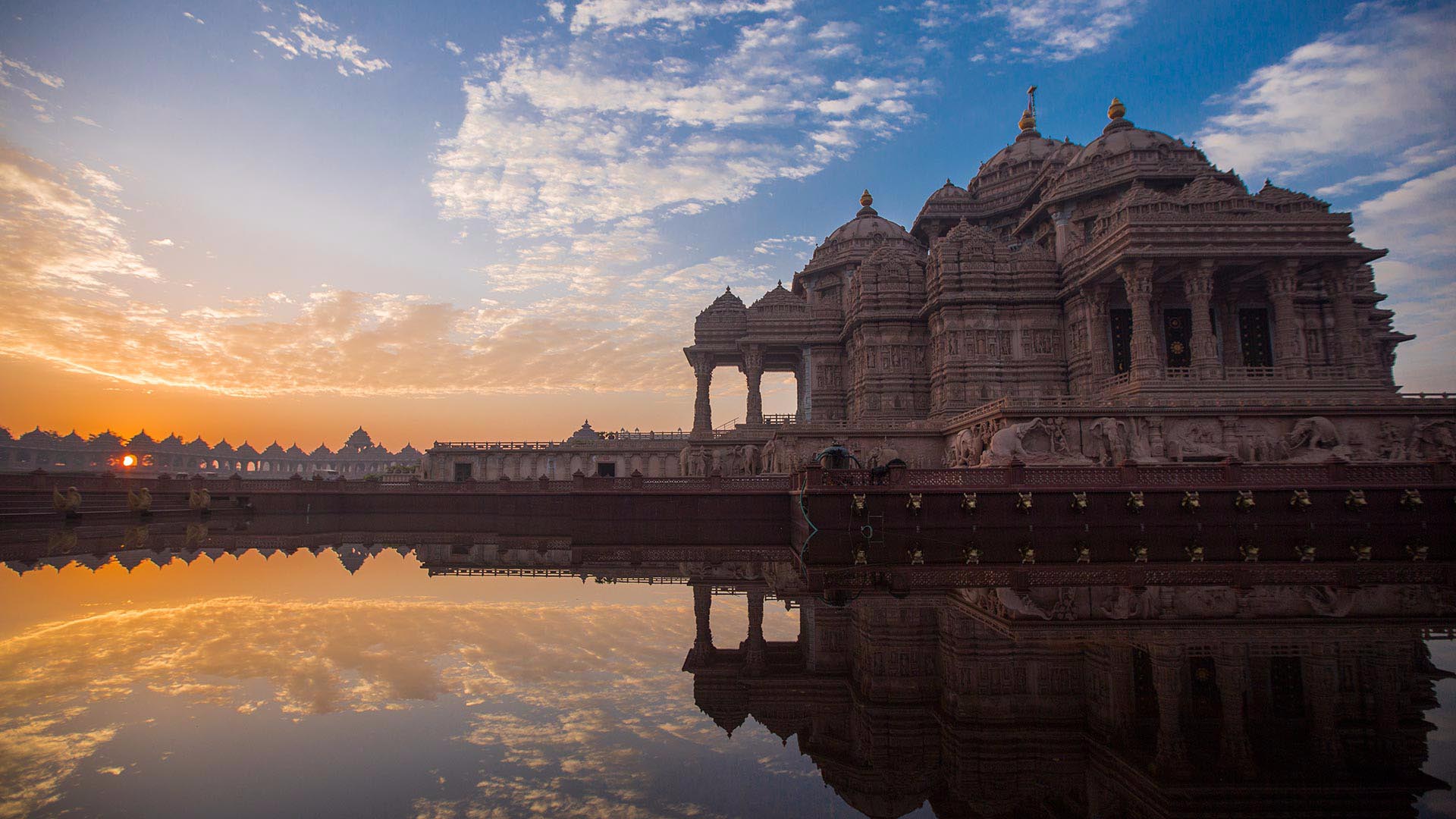
Planning Your Gujarat Adventure: Essential Travel Tips and Itinerary Suggestions
Crafting an optimal Gujarat tour package requires careful consideration of seasonal variations, transportation options, and accommodation preferences to ensure a seamless travel experience. The best time to visit typically falls between October and March, when pleasant weather prevails across the state, making it ideal for temple visits, beach activities, and desert explorations. During these months, daytime temperatures range between 20-30°C, while evenings remain comfortably cool, especially in desert regions.
Transportation within Gujarat offers multiple options tailored to different travel styles. The state's well-developed road network connects major tourist destinations through government-run buses and private taxis, with rates varying from economical shared services to premium private vehicles. For longer distances, the Western Railway network provides efficient connectivity between key cities, while domestic flights operate regularly to major airports in Ahmedabad, Vadodara, and Surat. Consider renting a private vehicle with driver for multi-day tours, ensuring flexibility in itinerary adjustments and access to remote locations.
Accommodation choices span a wide spectrum, from budget guesthouses to luxury heritage properties. In major cities like Ahmedabad and Vadodara, international chain hotels offer modern amenities alongside boutique properties housed in restored havelis. For authentic cultural experiences, consider staying at heritage hotels in Patan or Bhuj, where royal residences have been converted into luxurious accommodations. Beach destinations like Diu and Mandvi feature resort options ranging from mid-range to premium categories, many offering direct beach access and water sports facilities. During the Rann Utsav, specially designed tented accommodations provide comfortable lodging amidst the desert landscape.
To maximize your Gujarat experience, consider dividing your itinerary into thematic segments. Allocate four days for temple visits, focusing on the Golden Triangle of Somnath, Dwarka, and Palitana, with additional stops at Modhera and Ambaji. Dedicate three days to beach exploration, combining Diu's water sports with Mandvi's cultural attractions and Tithal's family-friendly amenities. Reserve two days for desert adventures in the Rann of Kutch, incorporating both White Rann and Little Rann experiences. Balance these with two days in Ahmedabad for urban exploration, including heritage walks through the old city and visits to contemporary landmarks like the Sabarmati Ashram and Akshardham Temple.
Practical considerations include obtaining necessary permits for restricted areas, particularly in border regions near Pakistan. Carry appropriate clothing for varying climates – lightweight cotton for coastal areas, warmer layers for desert nights, and modest attire for temple visits. Most tourist sites accept digital payments, though carrying some cash remains advisable for smaller establishments and rural areas. Local SIM cards provide reliable mobile connectivity and facilitate ride-hailing apps, which prove useful in urban centers. Finally, engage local guides at major attractions to gain deeper insights into Gujarat's rich cultural heritage and historical significance.
Embracing Gujarat's Multifaceted Charm
Gujarat emerges as a destination that defies singular categorization, offering travelers an extraordinary fusion of spiritual enlightenment, natural beauty, and cultural immersion. The state's temple architecture, ranging from the majestic Somnath to the intricate marble wonders of Palitana, stands as a testament to India's architectural prowess and spiritual depth. These sacred sites, coupled with the state's vibrant religious festivals and rituals, provide visitors with profound opportunities for personal growth and cultural understanding. The coastal regions, with their diverse beaches and marine ecosystems, complement this spiritual journey by offering rejuvenating escapes and thrilling water-based adventures that cater to all ages and interests.
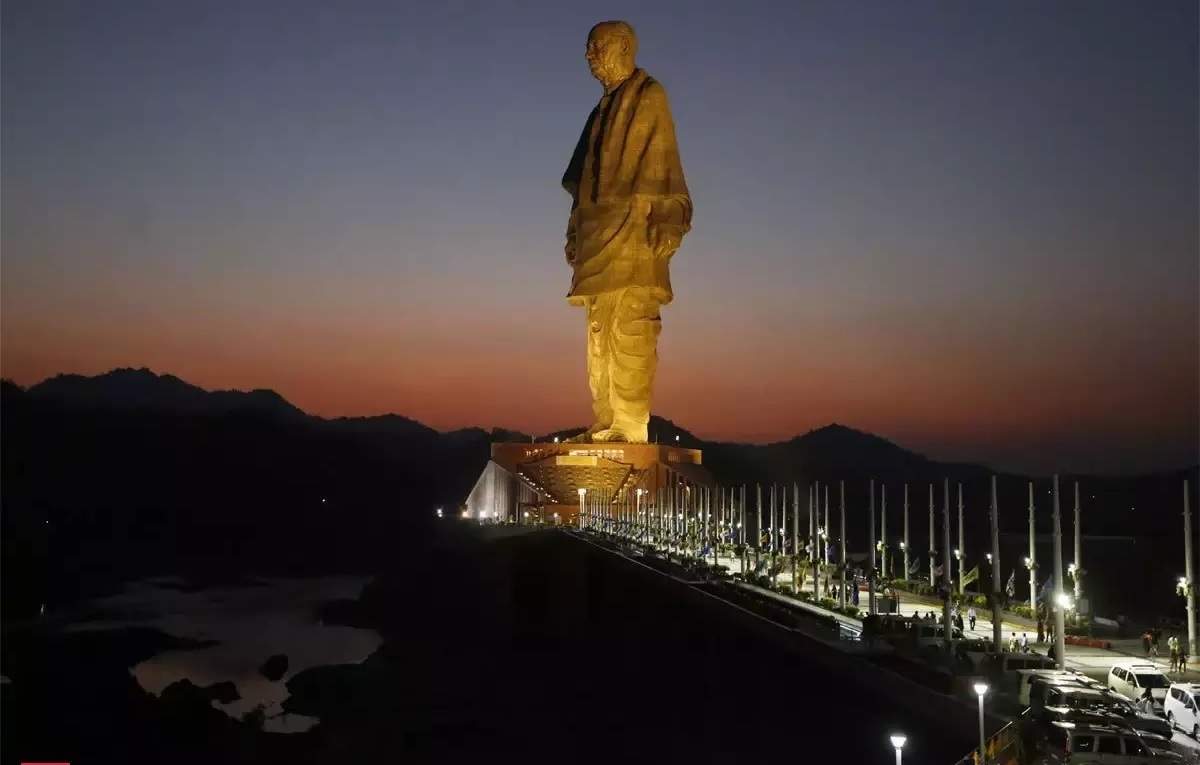
The desert landscapes of Gujarat, particularly the mesmerising Rann of Kutch, present a stark yet captivating contrast to the state's verdant temple complexes and sun-kissed beaches. This arid expanse, with its unique ecosystem and cultural traditions, invites travellers to embrace a different rhythm of life while participating in authentic local experiences. The annual Rann Utsav transforms this barren landscape into a vibrant celebration of art, music, and community, demonstrating how even the harshest environments can nurture rich cultural expressions. Such diversity within a single state underscores Gujarat's remarkable ability to offer something meaningful for every type of traveller.
Modern Gujarat seamlessly integrates its ancient heritage with contemporary developments, creating a dynamic travel destination that honours its past while embracing the future. The state's commitment to preserving traditional crafts, culinary arts, and performing arts ensures that visitors can experience authentic cultural practices alongside modern amenities and infrastructure. This balance between preservation and progress manifests in everything from heritage hotels housed in restored palaces to cutting-edge eco-tourism initiatives that protect natural habitats while promoting sustainable travel.
For those seeking transformative travel experiences, Gujarat's multifaceted offerings promise journeys that extend beyond mere sightseeing. Whether meditating in ancient temples, exploring vibrant markets, or venturing into remote desert landscapes, visitors discover opportunities for personal reflection and cultural exchange. With a well-crafted Gujarat tour package, travellers can immerse themselves in the state's warm hospitality, evident in every interaction with local communities, creating an inviting atmosphere that encourages deeper engagement with its people and traditions. Gujarat's unique combination of spiritual depth, natural wonders, and cultural richness positions it as an essential destination for those seeking meaningful connections with India's diverse heritage and contemporary vitality.
Sightseeing in Gujarat: Discover the Land of Culture and Heritage
Gujarat, a land where history, culture, and nature converge, offers some of India’s most fascinating sightseeing experiences. From ancient temples and vibrant festivals to serene beaches and national parks, Gujarat is a treasure trove of attractions that showcase the true essence of India’s heritage and modernity. Whether you’re a history buff, nature lover, or adventure seeker, Gujarat has something to offer everyone.
? Statue of Unity – The World's Tallest Statue
One of the most iconic landmarks in Gujarat is the Statue of Unity, located in the Narmada district. Standing at an impressive height of 182 meters, this statue of Sardar Vallabhbhai Patel, India’s first Deputy Prime Minister, is the world’s tallest statue. The monument is surrounded by lush green gardens, an exhibition hall, and a museum that highlight Patel’s life and contributions. The Statue of Unity has become a must-visit tourist destination for its architectural marvel and serene surroundings.
?️ Rann of Kutch – The White Desert
The Rann of Kutch, an expansive salt desert, is a sight to behold, especially during the Rann Utsav, a vibrant cultural festival held every winter. The festival showcases traditional Gujarat folk music, dance, crafts, and more, offering visitors a unique experience. The vast, barren landscape of the White Rann under a full moon is a mesmerising sight that draws photographers and travellers from all around the world. Visiting the Rann of Kutch is a truly magical experience, where the desert meets culture and adventure.
? Gir National Park – Home of the Asiatic Lions
For wildlife enthusiasts, Gir National Park in Saurashtra is an essential visit. Home to the last remaining population of the Asiatic lions, Gir offers a unique opportunity to witness these magnificent creatures in their natural habitat. Besides lions, the park is also home to leopards, crocodiles, and a variety of bird species. The best time to visit is during the winter months when the weather is ideal for safaris.
⛪ Somnath Temple – A Sacred Pilgrimage
The Somnath Temple, located on the southern coast of Gujarat, is one of the twelve Jyotirlingas and holds immense spiritual significance. The temple, dedicated to Lord Shiva, stands majestically near the Arabian Sea and is an architectural marvel. The temple has been reconstructed multiple times, with its current structure being a blend of traditional and modern architectural styles. A visit to Somnath is not only spiritually enriching but also offers breathtaking views of the sea.
? Dwarka – The Abode of Lord Krishna
The city of Dwarka, on the western coast of Gujarat, is another significant pilgrimage site. According to Hindu mythology, Dwarka was the kingdom of Lord Krishna. The Dwarkadhish Temple is the main attraction here, dedicated to Lord Krishna. The ancient ruins of Dwarka, submerged underwater, and the serene beaches make it an intriguing blend of mythology, history, and nature.
?️ Saputara – Gujarat’s Hill Station
For those seeking a break from the heat, Saputara, located in the Sahyadri Range, is the perfect escape. Known as Gujarat’s only hill station, Saputara is blessed with lush greenery, cool weather, and spectacular landscapes. The Saputara Lake, where you can indulge in boating, and the Sunset Point, offering panoramic views of the Western Ghats, are some of the prime attractions here. A visit to Saputara is perfect for nature lovers and families looking for a peaceful retreat.
?️ Champaner-Pavagadh Archaeological Park – A UNESCO World Heritage Site
For history enthusiasts, the Champaner-Pavagadh Archaeological Park is a must-visit. A UNESCO World Heritage Site, this park is home to ancient temples, forts, mosques, and step-wells that date back to the 16th century. The Pavagadh Hill is a popular spot for hiking, offering stunning views of the surrounding area. The Jami Masjid and Vijay Mandir are prime attractions within the park, showcasing the architectural brilliance of the region.
? Mandvi Beach – A Peaceful Coastal Escape
For beach lovers, Mandvi Beach in the Kutch district is a serene and relatively untouched destination. This beautiful beach is perfect for relaxing, taking long walks, and enjoying the sunset. You can also visit the Mandvi Shipyard, where traditional wooden ships are still built by hand. The tranquil atmosphere of Mandvi Beach is ideal for those looking to unwind and escape the hustle and bustle of city life.
?️ Ahmedabad – A Blend of Modernity and Tradition
As Gujarat’s largest city, Ahmedabad offers a perfect blend of modernity and tradition. Visit the Sabarmati Ashram, the former residence of Mahatma Gandhi, and take a walk along the Sabarmati Riverfront. The city is also famous for its pols, which are traditional neighbourhood clusters, and its beautiful step-wells like Adalaj Stepwell. Ahmedabad is also known for its delicious street food, making it a foodie’s paradise.
? Modhera Sun Temple – A Marvel of Architecture
The Modhera Sun Temple, dedicated to the Sun God, is a fine example of Gujarat’s architectural heritage. Situated in the Mehsana district, this 11th-century temple features stunning carvings and sculptures. The temple complex includes a stepwell that was used for ceremonial purposes, offering visitors a glimpse into the grandeur of ancient Hindu architecture.
Gujarat offers a stunning array of attractions, from sacred temples and cultural festivals to wildlife sanctuaries and scenic landscapes. Whether you’re exploring historical sites, experiencing the vibrant traditions of Gujarat, or simply enjoying the natural beauty of the state, Gujarat promises a fulfilling and diverse travel experience. Book your Gujarat tour package and get ready to embark on an unforgettable journey through this beautiful state!

How to Reach Gujarat: Travel Options for Every Visitor
Gujarat, one of India’s most vibrant states, is well-connected to the rest of the country and beyond. Whether you're travelling by air, rail, or road, reaching Gujarat is convenient and hassle-free. Here’s how you can reach this culturally rich state:
✈️ By Air
Gujarat is home to several international and domestic airports, making air travel one of the easiest ways to reach the state. The major airports are:
-
Sardar Vallabhbhai Patel International Airport (Ahmedabad): As the busiest airport in Gujarat, it connects Ahmedabad to several major cities within India, such as Delhi, Mumbai, and Bangalore, as well as international destinations like Dubai, London, and Singapore.
-
Vadodara Airport: Located in the heart of Gujarat, Vadodara has both domestic and limited international flight services.
-
Surat International Airport: Another important airport in the state, offering domestic flights to major cities like Delhi, Mumbai, and more.
-
Rajkot Airport: Connecting Rajkot to cities like Mumbai and Ahmedabad, this smaller airport is ideal for those traveling to Saurashtra.
Once you land in Gujarat, there are plenty of taxis, buses, and private vehicles available for intercity travel.
? By Train
Gujarat has a vast and well-developed railway network, making train travel a comfortable and economical choice for reaching the state. The major railway stations in Gujarat are:
-
Ahmedabad Junction: This is the primary gateway for trains arriving from major cities across India. With regular trains from Delhi, Mumbai, and other major cities, it is well-connected to the rest of the country.
-
Vadodara Junction: Another important station, Vadodara, connects Gujarat to various parts of India through frequent and fast trains.
-
Surat Railway Station: Surat, known for its textiles and diamond industries, has excellent train connectivity to cities like Mumbai, Delhi, and Chennai.
Several luxury trains, like the Maharaja Express, also offer a unique experience for tourists who wish to explore Gujarat in comfort.
? By Road
Reaching Gujarat by road is a pleasant experience due to the well-maintained highways and scenic routes. Major national highways like NH48 (Mumbai-Ahmedabad) and NH64 (Surat-Vadodara) connect Gujarat to other states like Maharashtra, Rajasthan, and Madhya Pradesh. Buses operated by state-run GSRTC (Gujarat State Road Transport Corporation) and private bus services run regularly between major cities and towns.
For travelers preferring self-drive, Gujarat’s road network is smooth and well-signposted, offering an excellent road trip experience.
?️ By Sea
Though less common, Gujarat is also accessible via sea, with Mundra Port being one of the major ports in India, connecting Gujarat to international destinations.
FAQS
1. What are the top tourist destinations in Gujarat?
Some of the must-visit places in Gujarat include the Statue of Unity, Rann of Kutch, Dwarka, Gir National Park, Somnath Temple, and Kutch Desert Wildlife Sanctuary.
2. What is the best time to visit Gujarat?
The ideal time to visit Gujarat is during the winter months (November to February) when the weather is pleasant and perfect for sightseeing. Avoid the summer months (March to June) due to the intense heat.
3. How can I reach Gujarat?
Gujarat is well-connected by air, rail, and road. Major airports include Sardar Vallabhbhai Patel International Airport in Ahmedabad, and there are regular trains and buses from nearby states.
4. Are there any adventure activities in Gujarat?
Yes, Gujarat offers various adventure activities such as camel rides in the Rann of Kutch, safari rides in Gir National Park, and treks around Saputara and Pavagadh.
5. What is the Rann Utsav?
The Rann Utsav is an annual cultural festival held in the Rann of Kutch that showcases traditional dance, music, crafts, and local cuisine. It is one of the major attractions of Gujarat.
6. What are some unique experiences in Gujarat?
Visitors can enjoy traditional folk dances, wildlife safaris, pilgrimages to famous temples, and the chance to explore the White Rann and Gir National Park for Asiatic lions.
7. Is Gujarat a good destination for family holidays?
Yes, Gujarat is a great destination for families, with a range of activities suitable for all ages, including historical sites, beaches, wildlife sanctuaries, and cultural experiences.
8. What should I pack when travelling to Gujarat?
Pack light, breathable clothes for the summer, and warm clothes if travelling during the winter. Don’t forget essentials like sunscreen, hats, and comfortable footwear for sightseeing.
9. What is the significance of Somnath Temple?
The Somnath Temple is one of the 12 Jyotirlingas of Lord Shiva and is a major pilgrimage site for Hindus. The temple is also known for its architectural beauty and its location on the Arabian Sea.
10. What are the best beaches in Gujarat?
Some of the best beaches in Gujarat include Mandvi Beach, Diu Beach, and Somnath Beach, offering serene views and a perfect atmosphere for relaxation.
11. Can I experience Gujarat’s handicrafts?
Yes, Gujarat is famous for its traditional handicrafts such as Kutch embroidery, Bandhani textiles, Patola silk, and block printing, which can be purchased in local markets.
12. Are there any luxury hotels or resorts in Gujarat?
Yes, Gujarat has numerous luxury hotels and resorts, particularly in Ahmedabad, Gir, and Kutch, offering high-end amenities, spa services, and stunning views of the landscapes.
13. What are some must-try dishes in Gujarat?
Gujarat is famous for its vegetarian cuisine, including dishes like Dhokla, Khandvi, Farsan, Undhiyu, and the traditional Gujarati Thali, which is a complete meal consisting of various dishes.
14. How many days are needed to explore Gujarat?
To explore the key attractions of Gujarat, a trip of 7 to 10 days is recommended. This will allow you to visit major cities like Ahmedabad, Surat, and Vadodara, and enjoy destinations like Dwarka, Gir, and Rann of Kutch.
15. Is Gujarat a safe destination for solo travellers?
Yes, Gujarat is considered to be a safe destination for solo travellers. However, like any other place, it’s always wise to stay aware of your surroundings, especially in crowded areas or tourist spots.


.jpg)
